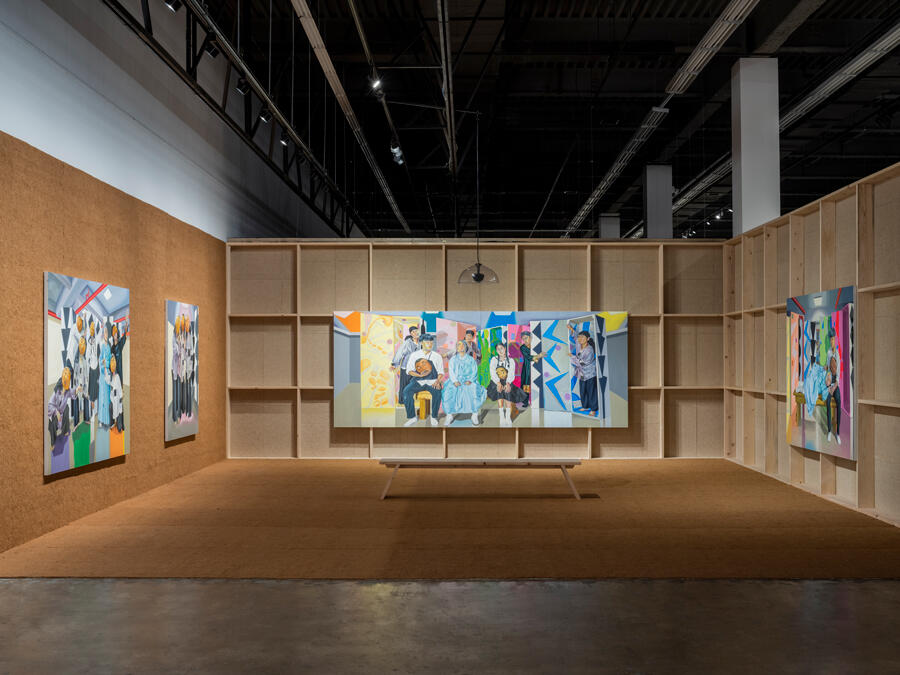The Radical Softness of the 14th Gwangju Biennale
Created as a memorial to suffering, this year’s iteration sees a shift in both the exhibition and the city toward a new historiography
Created as a memorial to suffering, this year’s iteration sees a shift in both the exhibition and the city toward a new historiography

Enough of reparations. Enough of new commissions by international artists that re-open old wounds by interviewing victims for inspiration or interpretation. This is the unspoken feeling, in the local artworld at least, toward the Gwangju Biennale – an event established in 1995 to commemorate the violently suppressed Democratic Uprising of 1980 against military dictator Chun Doo-hwan.
This year’s iteration, however, takes a different tack. Drawn from Laozi’s 4th century BCE text Dao De Jing, the title, ‘Soft and Weak like Water’, emphasizes wu wei (actionless action): going with the flow of nature or providence. The biennial’s introductory text suggests the radical softness of water as a form of resilience: ‘[an] endurance and pervasive gentleness that flows across structural divisions and differences’. Spread over five open-plan venues, the exhibition gives each work space to breathe. The most successful new international commissions skirt the pitfalls of previous iterations by taking a backseat to local artists and allowing subjects the right to opacity.

Four new paintings by Aliza Nisenbaum, for instance, use the international platform to spotlight a local theatre troupe, Shin-myeong, who have sought reparative justice through their productions since 1982. Alongside an 82-minute audio recording of their performance of Someday in Spring (2010), which gives voice to the spirits of victims, Nisenbaum’s canvases depict Shin-myeong’s performers. In Mother and Son, Reunited (2022), for example, a female figure lies on a wooden bench, her head resting in the lap of a young man, around whose neck hangs a traditional tal mask. Used in war, burial and the remembrance of great historical figures, these masks symbolize both trauma and its resolution.

The biennial’s curatorial concept leads to the inclusion of works in unexpected media. For instance, Oh Yoon’s woodcuts – a medium seen as intrinsic to the era of agitation for democratization and now widely regarded as outmoded – depict those who were voiceless under Chun’s dictatorship: Dance 1 (1984), for example, shows a dancer caught in the throes of wild movement, their features contorted in ecstasy. These prints are juxtaposed with Malaysian activist-artist group Pangrok Sulap’s contemporary reinterpretations of archival images from Oh’s era, suggesting the group’s and curators’ belief in that vernacular’s international contemporary relevance. Printed in stark black on cotton and hung from the ceiling like a protest banner, Gwangju Blooming (2023) revisits Kin Chon Kil’s infamous photograph of bereaved family members crying over makeshift coffins. Both bodies of work generate a long view of history through the re-presentation of struggle toward social change.

Like the formlessness of water, or history as opposed to historiography, this exhibition constitutes a montage rather than a documentary. Meiro Koizumi’s Theater of Life (2023) – a project the artist developed in tandem with young Koryo-in people from the Korean diaspora in Central Asia – is just such a montage in the form of a multi-channel video installation. The artist led a workshop during which participants created a play inspired by historical documentation of a theatre in Kazakhstan, established in 1932, that was seminal in forming Koryo-in identity. The resulting work, which splices footage from the workshop in a stream of images, does not detail complicated issues of Korean diasporic identity and has no fixed running time. Preserving the right to opacity for this community, Theater of Life places the burden of learning on the viewer rather than the subject.
In March, Chun Woo-won – grandson of South Korea’s former military dictator – issued the first public apology by a member of his family to the relatives of victims. In May, protests against the Gwangju Biennale’s Park Seo-Bo Award – due to the eponymous billionaire painter’s perceived complicity with oppressive regimes – led to the abolition of the UD$100,000 prize less than two years after its launch. This softer, gentler biennial reflects the changing mood of the city that hosts it.
‘Soft and Weak like Water’, the 14th Gwangju Biennale, is on view until 9 July.
Main image: Taiki Sakpisit, The Spirit Level, 2023. Courtesy: the artist and Gwangju Biennale Foundation; photograph: glimworkers






















